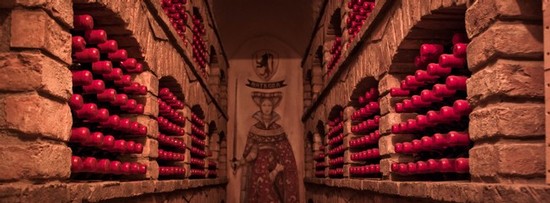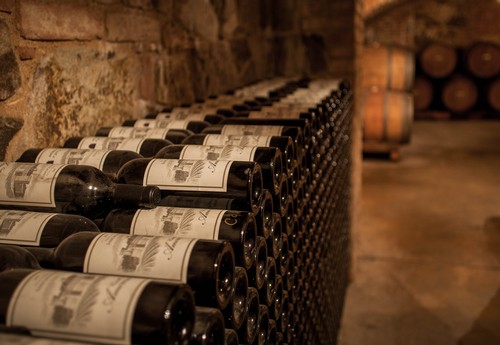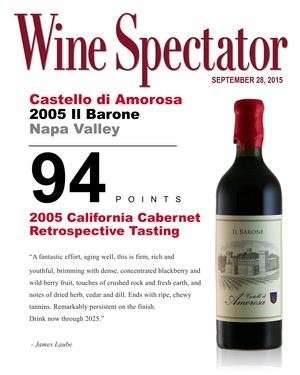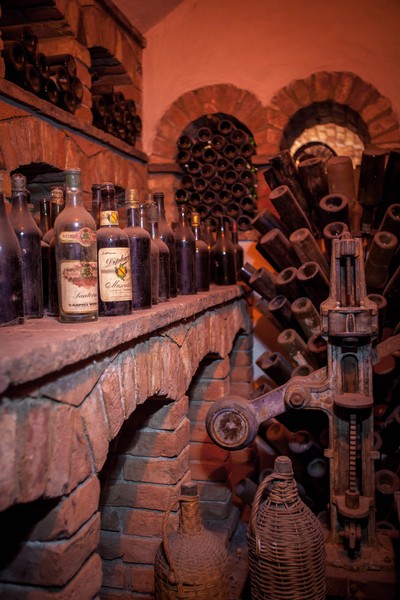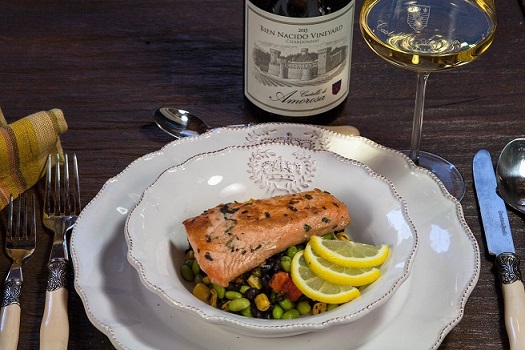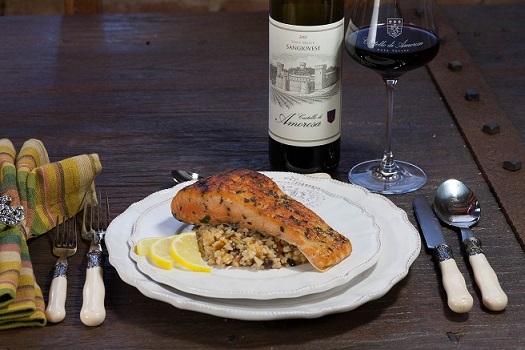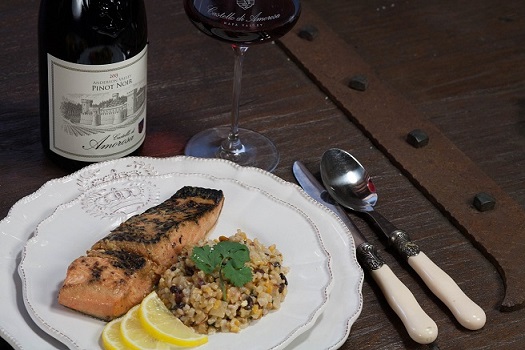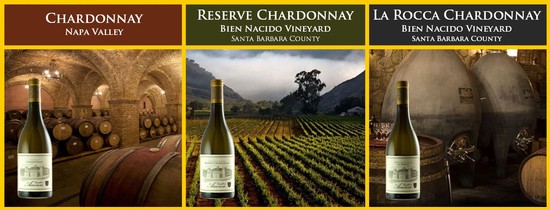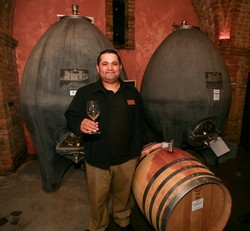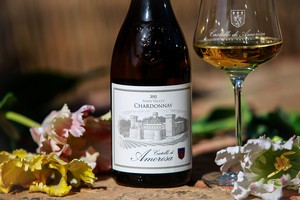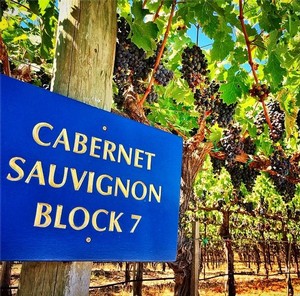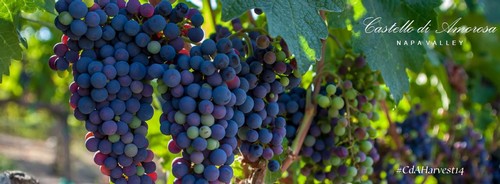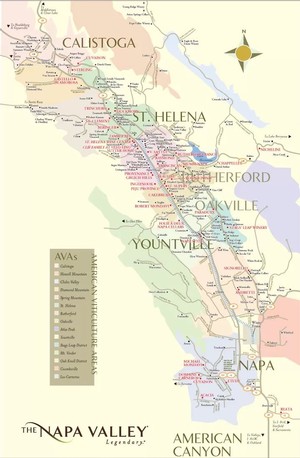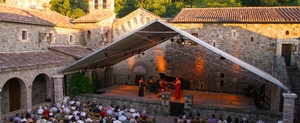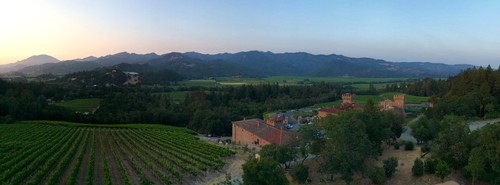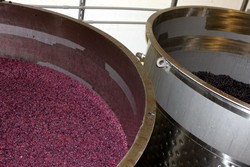Ridesharing Castello Style
Ridesharing: Castello Style
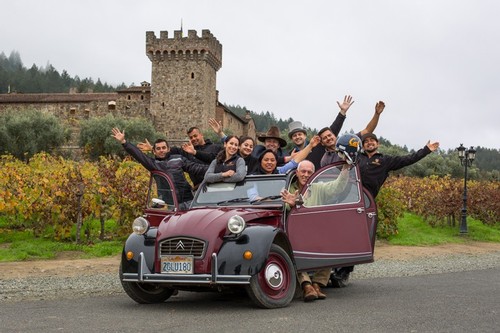
Dario Sattui (with the Cal Bears football helmet) and his team are serious about ridesharing. His Citroen 2CV which was originally designed to hold 2 farmers and haul 50 kilos of potatoes at 30 mph has been selected as the rideshare vehicle of choice for his enthusiastic employees.
CASTELLO DI AMOROSA OFFERS RIDE-SHARING FOR EMPLOYEES
Biggest program in Napa Valley
Frustrated with traffic in the Napa Valley? Wondering if any wineries are doing anything about it? Castello di Amorosa launched a ride sharing program in August and has seen the program succeed beyond expectations. The castle wishes to be part of the solution.
Approximately 30 castle employees have taken advantage of this program and are carpooling, cycling, walking or taking the bus to work. In this program drivers and passengers are incentivized with cash payments by the winery of $5 per round trip per passenger if there is less than a 15 mile commute and $10 per round trip per passenger for distances greater than 15 miles. The winery is proud to be reducing traffic generated by its employees on Napa County roads.
“We are delighted to be doing our part in cutting down on traffic and pollution,” says winery founder Dario Sattui. “We may be the only winery offering a financial incentive to our employees to ride to work together,” he continued. “We see this program growing at a great pace in the near future, and we’re honored to be a leader in our community to make this a worthwhile project both for our employees, local citizens and ‘Mother Nature,’” he added.
Napa County has studied local traffic patterns over the last several years and, in broad terms, has determined that most of the traffic is caused by people who work here but live somewhere else. “There are many factors---such as the lack of affordable housing---which cause the traffic which we all are noticing,” Sattui adds. “If other wineries follow our lead and incentivize their employees to share their rides and take public transportation, we may be able to see a difference in a relatively short period of time,” he continues.
In the County’s study (http://www.nvta.ca.gov/travel-behavior-study), tourists accounted for only 21% of the County’s traffic. The study estimated that 9% of all traffic is just passing through the County.
Castello di Amorosa will be celebrating its tenth anniversary in 2017. Building the winery was a fifteen year labor of love for Dario Sattui. The authentically built castle/winery used European artisans and materials such as antique bricks and roof tiles, hand-hewn timbers and doors, hand-forged iron gates, lamps and hardware and medieval construction techniques and over 8,000 tons of hand-chiseled local stone create this architectural gem.
The winery itself is a modern contrast to the castle. It contains the most advanced crushing and fermentation facilities, four underground levels and 24,000 square feet of caves for barrel aging.
Castello di Amorosa owns a total of 83 acres of estate vineyards in Napa, Sonoma and Mendocino counties. It sells its entire production of wine exclusively at the winery.
Castello di Amorosa is open seven days a week from 9:30 a.m. to 6:00 p.m. March-October and 9:30 a.m. to 5:00 p.m. November-February. Guests can come only to taste or can take a guided tour followed by tasting. Reservations---for tours only---are recommended.
Aging Gracefully
If you have ever taken a guided tour of the Castello, you will have walked past our Library Rooms, filled with the Castello’s older vintages resting quietly in their cool brick shelves in small, frescoed rooms behind hand-forged wrought iron gates. One of these rooms even houses wines from Dario’s great grandfather’s original winery in San Francisco, dating back over a century. These dimly lit rooms raise numerous questions from inquisitive guests: what is the best way to age wine? How should you store your bottles? How long should you age them? Are those 100 year old bottles still drinkable? All great questions! Now for some answers…
♦ Storing Your Wines
Whether you’re planning on enjoying the bottles you brought back from your trip to the Castello next week, next year, or next decade, there are a few simple steps you can take to ensure that your wine will be perfectly ready to drink when you pop that cork:
- Store cork sealed bottles on their side. This will help to ensure that the cork stays moist, preventing it from drying out and letting oxygen into the bottle.
- Store screw cap bottles upright. Since there is no cork, there is no need to store these bottles on their sides.
- Keep your wines out of direct sunlight. The back seat of your car or your kitchen window are definitely not ideal places to keep your favorite bottle of Castello wine. Light can be damaging to wines, altering their delicate chemical balance and potentially even heating up your wine. This is why the lights you see in our Library Rooms are dim and red, and also why most ageable wines such as Cabernet Sauvignon come in deep green bottles; the color of the bottle helps to prevent light rays from penetrating through the glass.
- Store your wines at a cooler temperature. Hot wine = cooked wine, which can be a sad sight to see (and a terrible thing to taste). You’ll notice heat damage to your bottles if the cork appears to be popping up from the bottle. Most wines are best kept around 55° Fahrenheit (13° Celsius). Keeping them cooler also helps to slow the aging process. Storing your bottles in a slightly humid environment (60-70% on average) is also helpful for preventing the cork from drying out at the end not in contact with the wine. If you don’t have a wine fridge or cellar, keeping them in a cool place out of direct sunlight, like a closet or a wine rack in the coolest part of your house, should do the trick just fine.
♦ Aging Your Wines
Are a Cabernet Sauvignon and a Pinot Grigio capable of aging the same amount of time? Definitely not. There are certain characteristics of specific grape varietals, as well as how the wines are aged before bottling, that determines a wine’s ageability. The vast majority of wines available in the market today are meant for consumption sooner rather than later. Some, however, absolutely benefit from some quiet time in the cellars.
- Bold red wines like our Il Barone Reserve Cabernet Sauvignon and La Castellana Super Tuscan blend are capable of long-term aging, typically up to 15 years from the vintage date on the bottle. This is because these wines have the structure capable of aging due to the tannins imparted from thick skins of the Cabernet grapes as well as the new French oak barrels they’re aged in. As the wine sits in the bottle, these tannin molecules are linking together and falling to the bottom of the bottle as sediment; which is often why so many younger Cabernets tend to pack a bigger “punch” than older vintages (and also why so many older red wines are decanted to remove the sediment). While these wines are fantastic to drink now, they can be even better after laying down for several years, as the structure of the wine smooths out and the tannins are allowed to integrate further.
- Our 2005 Il Barone was recently awarded 94 Points from Wine Spectator Magazine in a ten year retrospective tasting led by wine critic James Laube, which only helps to prove that those bottles of Castello Cabernet in your cellar are getting even more spectacular with age!
- Light-bodied white and sweet wines like our Pinot Grigio and La Fantasia are meant for drinking within the first five years from its vintage date. These wines are prized for their bright and crisp qualities; as they age these characteristics tend to fade. So if you’ve been hanging onto that bottle of 2006 La Fantasia, it might be time to pop that bottle before it’s too late!
- If you’re ever curious about how long to age your favorite bottle of Castello wine, check out our Ageability and Cellaring Chart, which shows the proper time, temperature, and storing positions for our premium and reserve wines.
So whether you’re building your own Tuscan-inspired brick and frescoed underground cellar, or are simply looking to keep your prized Castello wines from cooking in the living room of your apartment, there are plenty of ways to ensure that you’ll be enjoying your favorite bottle at the best time, temperature, and place! Just be sure to drink them before they turn 100!
NY Strip Steaks
I've spent a few years around various farms and ranches in Montana and Washington State working with livestock and performing various farming duties and I’ve had the opportunity to dine on some very good steak. I’ve been a real fan of steak ever since and so I was very excited to meet the folks at Best Filet Mignon and taste their product, paired with our Il Barone Reserve Cabernet Sauvignon, of course. You can read about our meeting in our last blog post, but let’s talk about the NY Strip steaks.
Just when I thought I had tasted the finest filet mignon ever, our friends at Best Filet Mignon sent me a package of their NY Strip steaks and I didn’t waste any time organizing a party and then heading to the grill. The steak was cooked to perfection which was great, but now all my friends have very high expectations when they come for dinner!

Sent overnight in an elegant shipping box, the NY Strip steaks, in their vacuum sealed pouch were very fresh, just like the filet mignon steaks I tasted earlier. Their steak is USDA prime and no hormones or antibiotics are ever used in the diet of their cattle.
What really impressed me was that Executive Chef, Phil Horn of Best Filet Mignon included a great recipe which I followed. Here it is. Follow every step and you won’t be disappointed.
Roasted Garlic Dijon Mashed Potatoes
Ingredients
- 2 3/4 pounds medium-size Yukon Gold potatoes, peeled, quartered
- 4 cloves garlic
- 6 tablespoons (3/4 stick) butter, room temperature
- 2/3 cup (or more) whole milk
- 3 tablespoons Dijon mustard
Directions
- Placed peeled garlic cloves in small piece of tin foil, drizzle with olive oil, pinch of salt, close and place in 425 degree oven for 40-50 minutes.
- Cook potatoes in large pot of boiling salted water until very tender, about 25 minutes.
- Drain well.
- Return potatoes to pot. Add butter, roasted garlic cloves and mash potatoes until almost smooth.
- Mix in 2/3 cup milk and Dijon mustard.
- Season to taste with salt and pepper.
Parmesan Tomato Crisps
Ingredients
- 6 cups thinly sliced beefsteak tomatoes
- 2 tablespoons extra virgin olive oil
- 2 teaspoons sea salt
- 1 teaspoon garlic powder
- 2 tablespoons fresh chopped parsley
- 2 tablespoons grated Parmesan cheese
Directions
- Gently drizzle and toss the sliced tomatoes in the olive oil to coat slices.
- Place slices without overlapping onto dehydrator shelves or a baking pan.
- If you are baking preheat oven to 325 degrees F.
- In a small bowl whisk together the remaining ingredients.
- Sprinkle mixture over each slice.
- Depending on how thick the slices of tomato are, dehydrating could take anywhere from 12-24 hours.
- If baking check every 30 minutes until edges show some charring, could take 2-3 hours.
To order these delicious NY Strip Steaks from Best Filet Mignon, head to their website. Normally, Best Filet Mignon offers their 8 pack of 10 oz. NY Strip steaks for $289, but for a limited time, friends of Castello di Amorosa will receive $100 off which includes free FedEx overnight shipping. Simply enter the code “cdany” at checkout.
And if that’s not enough, you should know that BestFiletMignon.com is more than Filet Mignon. If you need guidance, ideas, or culinary advice, call the chef on his personal cell at 310-729-3264 or email him at chef@bestfiletmignon.com.
Stay tuned for more recipes from Chef Phil and wine pairing ideas from Castello di Amorosa.
Napa Valley Festival del Sole celebrates 10 magical years
Nadine Sierra, one of the most promising emerging talents in the opera world today opened the landmark 10th season at the Napa Valley Festival del Sole on July 17, 2015. Boasting formidable 13th century Tuscan architecture and stunning views of the Napa Valley from it's Diamond Mountain District vineyards, the Napa Valley and Castello di Amorosa was a perfect setting to experience the performing arts, wine, wellness and the culinary delights offered by Festival del Sole, one of the world's premiere cultural events.
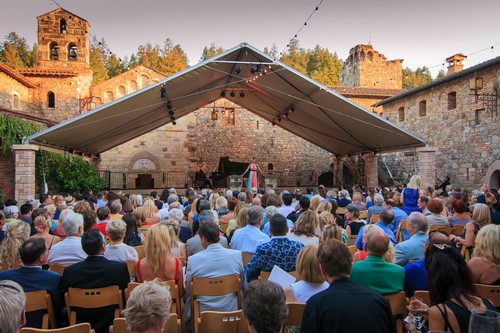
Nadine Sierra, one of the most promising emerging talents in the opera world today, performs.
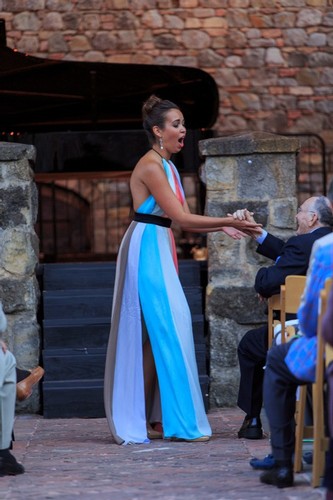
Nadine Sierra celebrates with Jan Schrem, a major benefactor
of Festival del Sole.
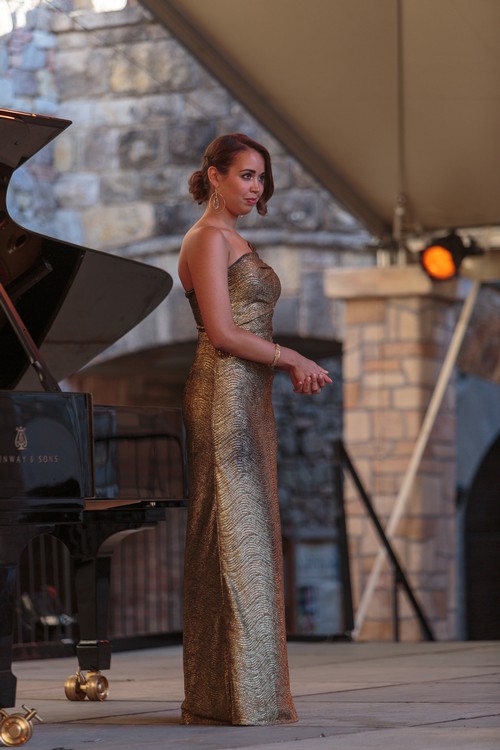
Nadine Sierra on stage at the 10th anniversary of Festival del Sole.
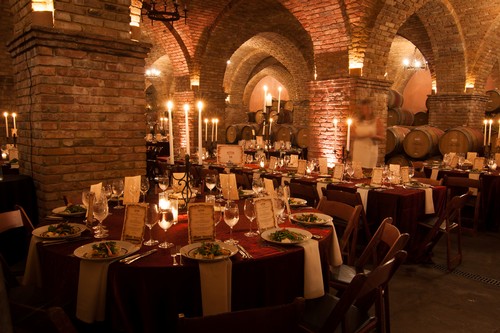
An elegant dinner for patrons followed Nadine Sierra's performance in The Grand Barrel Room.
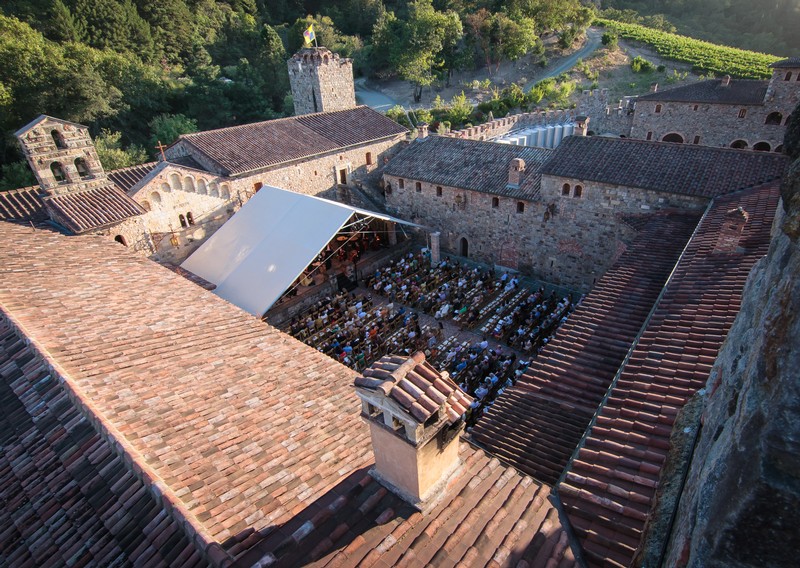
The Russian National Orchestra performes Moscow Nights in the Courtyard featuring world-renowned baritone Dmitri Hvorostovsky, acclaimed Russian-born baritone, Rodion Pogossov and tenor Daniil Shtoda.
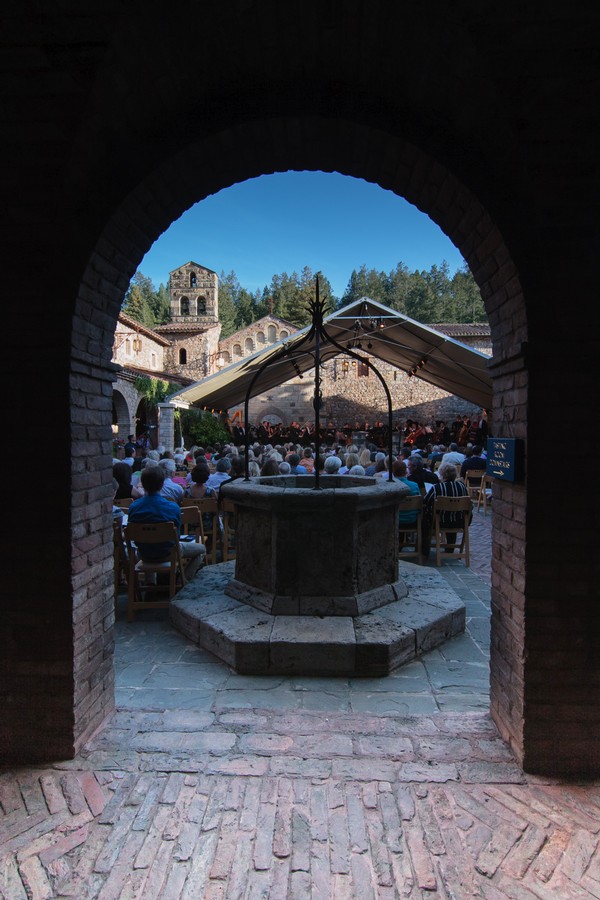
The much-revered coutyard at the Castello was filled with the sounds of the Russian National Orchestra.
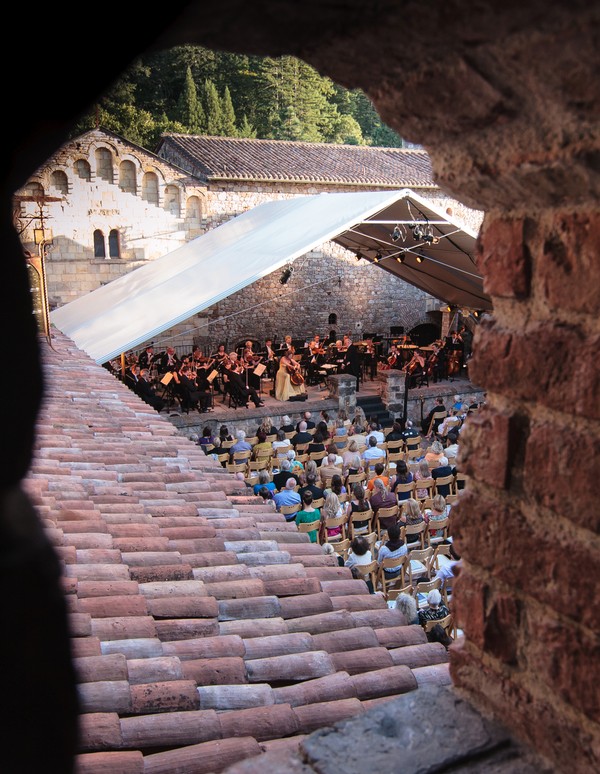
Cellist Nina Kotova performs with the Russian National Orchestra.
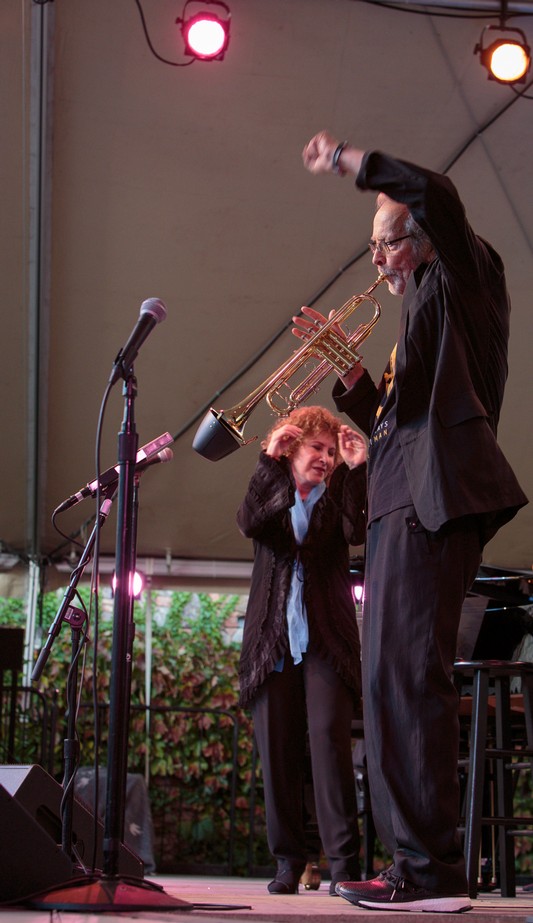
Music icon, legendary trumpeter and nine-time Grammy Award winner Herb Alpert and his
wife, Grammy-winning singer Lani Hall made their Festival del Sole debut in a night of sublime jazz.

Herb Alpert was simply magical on the trumpet playing many classic numbers and songs from their latest album, Steppin' Out.

That's Michael Shapiro on drums and percussion and Hussain Jiffry on bass.
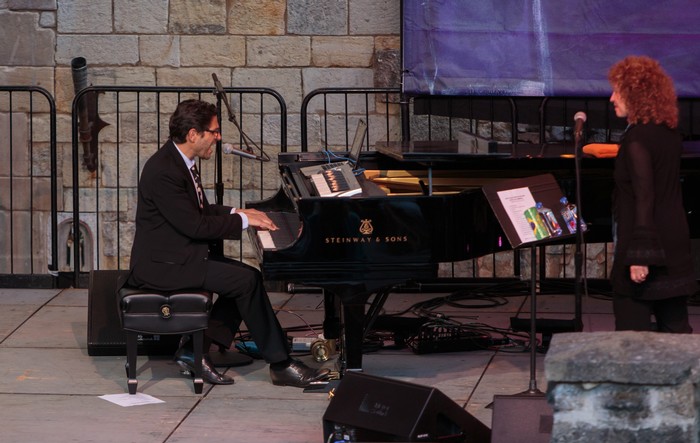
Bill Cantos performs with Herb Alpert and Lani Hall.
For more details visit: http://www.festivaldelsole.org
Salmon with………
It is well known the health benefits of salmon are seemingly endless. From cardiovascular health to muscle and tissue regeneration, to eye health-- regularly including this meaty fish in our diet even bolsters our metabolism! Additionally, salmon is an excellent source of beneficial fatty acids like omega-3 as well as a good source of vitamins A and D.
Salmon is also exceptionally wine friendly; the chameleon of the sea when looking for the perfect pairing. Salmon works with whites, reds and rosé, so if salmon is on the menu let the cooking method and spices guide your pairings.
In the words of Billy Joel “a bottle of red and a bottle of white, it all depends on your appetite”.
Well, your appetite and perhaps what was in the latest Castello Wine Club shipment!
Chardonnay with Lemon Pepper and Garlic Baked Salmon
With brilliant stone fruit, a hint of creamy citrus (think merengue) and just a breath of fig and hazelnut the 2013 Bien Nacido Chardonnay is the perfect canvas for this salmon preparation. Keep the sides fresh and vibrant like this hash of sweet corn and edamame. Liberally season the fish with garlic salt and lemon pepper. Place salmon, skin side down, on a non-stick baking sheet or in a non-stick pan. Bake until salmon is cooked through, about 12 to 15 minutes at 450 degree oven.
Sangiovese with Cajun Spiced Salmon
Salmon is a hearty meaty fish with high fat content (the good fats!) so it can play with high acid, high clarity varietals like Sangiovese. For the seasoning I used a Cajun spice rub but added additional garlic and black pepper. I wanted the spice to bring zing and pizzazz with our latest Sangiovese release. The 2012 Sangiovese shows vibrant notes of ripe red raspberry, rhubarb and trademark anise. It is a mid-palate explosion of delicious and perfect with the rich spiced salmon
Pinot Noir with Ginger, Soy, and Balsamic Grilled Salmon
A simple soy sauce, brown sugar and ginger marinade, with a dash of lemon and garlic, are the perfect salty-sweet complement to rich salmon fillets. Evocative Asian notes of ginger and soy are classic flavors for Pinot Noir pairing and the smoky grill perfectly accentuates this earthy wine. Our Anderson Valley Pinot Noir has just a touch of exotic spice but the palate showstopper is the obvious grace and elegance iconic to cool climate Pinot Noir.
Chardonnay - The Golden Queen of California
It has often been said that if Cabernet Sauvignon is king here in Napa Valley, then Chardonnay is queen. Chardonnay has reigned supreme among white wine grapes in California since the Judgment of Paris in 1976, when Chateau Montelena’s 1973 Chardonnay trumped the French competition in a blind tasting and helped to put Napa Valley on the map of world-renowned winegrowing regions. Today, there are over 100,000 acres of Chardonnay vineyards planted throughout California, and the varietal remains one of the top white wines consumed by Americans each year.
One of the reasons for Chardonnay’s popularity is the wide variety of styles it can be crafted in, based on where the grapes came from and how the wine was aged. While the majority of Chardonnays are aged in oak barrels, unoaked Chardonnays are rapidly increasing in popularity due to their brighter, fruitier notes, and both aging styles offer a wide range of complexity in the finished wines.
Chardonnay at the Castello
Here at the Castello, we produce two Chardonnays every year from two select cool climate vineyards in California. Our Napa Valley Chardonnay fruit comes from own estate vineyard in the Los Carneros AVA (American Viticultural Area) in the southern end of the Napa Valley, which is meticulously tended to by our Vineyard Manager, David Bejar, who has worked with Dario Sattui and our winemaking team for the past 17 years. Our Bien Nacido Vineyard Chardonnay comes from the iconic family owned vineyard in the Santa Maria Valley in Santa Barbara County, along the Central California Coast. In using these two cool climate vineyards to produce our Chardonnays, we hope to showcase the unique terroir of each region while utilizing both traditional and innovative winemaking techniques.
Our Bien Nacido Vineyard Reserve Chardonnay
All of our Chardonnay is harvested at night in order for the fruit to arrive at the Castello cold, which preserves the its delicate aromatics and natural acidity. Once the fruit gets to the winery, the whole grape clusters are placed into our two pneumatic, or “bladder” presses, which gently presses the juice from the skins and seeds. The juice is then pumped into Burgundian French oak barrels, where it ages for 8-10 months. We use 50% new and 50% second use French oak barrels on our oak-aged Chardonnays, which provides a balance between showcasing the terroir of the vineyard, acidity and fruit characteristics of the varietal, and the subtle notes of toast and spices that come from each individual barrel.
Two of our clear-headed oak barrels, which show the wine aging on the lees
After the wine has undergone primary fermentation, which converts the sugars in the juice into alcohol, our winemaking team then selects a specific number of barrels to undergo malolactic, or secondary fermentation. Here, the malic acid in the juice is converted into lactic acid, which gives Chardonnay its signature creamy mouthfeel (think “lactose” like milk). Roughly 40-60% of our Chardonnay barrels undergo malolactic fermentation, depending on the characteristics of the vintage and the acidity levels of each blend.
La Rocca Chardonnay – A new twist on a classic wine
If you have visited the Castello on a guided tour, you may have noticed our concrete fermentation eggs in the Grand Barrel Room, our 12,000 sq ft cross vaulted room three levels underground. We have been using these concrete eggs for the past several years to craft select single vineyard white wines like our Ferrington Vineyard Dry Gewurztraminer and Tyla’s Point Pinot Bianco, and beginning with the 2013 vintage we are also fermenting and aging a select amount of our Bien Nacido Vineyard Chardonnay in one of these eggs. We have named this unique, limited-release wine “La Rocca,” which means “The Fortress” in Italian. The egg shape allows for a natural suspension of the lees (sediment) compared to aging in traditional stainless steel tanks, without imparting any flavors or aromas found in oak barrel aging, and the higher acidity and tropical fruit characteristics of the Bien Nacido Vineyard Chardonnay made this fruit a perfect choice for aging in these unique vessels.
Cellar Master JoseMaria Delgado sampling our Napa Valley and La Rocca Chardonnays at The Grand Barrel Party
We are excited to make two Chardonnays from this historic vineyard in both French oak and concrete, as these two differing styles help to show the versatility of the varietal as well as the vineyard. Our La Rocca Chardonnay from Bien Nacido Vineyard is released each year to several of our shipping clubs, and we look forward to showing off the versatility of this beautiful Burgundian grape with our trio of California Chardonnays with each vintage!
Verasion in the Vineyards - Harvest is Coming!
Harvest season is fast approaching here in the Napa Valley, and we’re seeing beautiful changes in the vineyards surrounding the Castello as the grapes ripen on the vine. This is the time of year when verasion occurs, or the “onset of ripening” of the berries.
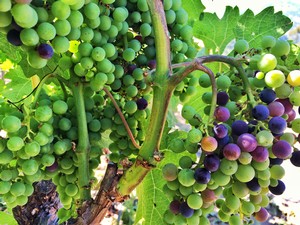
The green berries begin changing to different shades of purple to a dark blue-violet color as they take on the characteristics of their specific varietal. This typically begins in the late summer season, and this year we saw verasion beginning in our estate vineyards around the beginning of July.
It’s a beautiful time to visit Napa Valley and see the changing colors as the summer season turns to fall. We are looking forward to Harvest 2014!
Planning your summer visit to Napa Valley
Summer is a beautiful time to visit Napa Valley. Well let’s face it, with our mild, Mediterranean climate pretty much any time of year is great to visit, but soaking up the sunshine while surrounded by vibrant green vineyards, rolling hills, and a glass of wine in hand is a fantastic way to spend an afternoon in the warm summer months. Here are a few ways to maximize your fun in the Napa Valley sun in the summertime:
♦ Pick 1-2 "can't miss" wineries, and fill in the gaps with others as your day progresses. Keep in mind that each winery will pour you roughly the equivalent of one glass (5 oz) of wine, so it’s good to limit yourself to 3-4 wineries per day. Trying to plan tastings at more than 3 wineries for one day can leave you feeling rushed, and wine country is all about relaxing. You’re on vacation, after all!
♦ Visit larger/ more popular wineries before noon. Larger wineries can draw crowds of thirsty travelers, especially on the weekends, and these crowds tend to get larger later on in the afternoon. Visiting these wineries before noon allows you to have a more relaxed experience to enjoy your tasting and explore the grounds at a leisurely pace.
♦ Plan on spending 1-2 hours at each winery. This goes along with the “choose 3-4 max” rule of wineries per day (especially if you’re planning for winery tours). Most wineries in Napa Valley open around 9:30am and close around 6:00pm in the summer, so figuring out how early you want your day to start/ where you’re travelling to can be a big factor of how much time you have to actually taste. Pace out your day and take the time to enjoy each winery you visit without feeling you need to jump to the next.
♦ Look for specialty tours. Many wineries throughout the valley offer experiences beyond the standard tasting, and these are a great option to take advantage of, especially with the larger wineries as it allows for a less crowded and more personal experience. Cheese pairings, food and wine pairings, and guided tours are a fantastic way to learn more about what goes into each winery's philosophy and connect you even more with the delicious vintages being poured for you!
♦ Have a designated driver. If nobody wants to take the keys, it might be a good idea to look into hiring a driver for the day. Napa Valley has many car and limo services that cater to the thirsty traveler (and even a Wine Train!), and if you’re staying in Calistoga, their shuttle is a great option for getting around the northern end of the Valley!
♦ Bring a water bottle/ snacks. Hydration is important! You’ll want to drink roughly one 8 oz glass of water for each tasting if you’re looking to avoid feeling too groggy by the end of your day, and it’s never a good idea to taste on an empty stomach! Keep in mind that most Napa Valley wineries cannot offer picnic facilities per county ordinance, so plan on snacking in the car or finding a park if you wanted to have a full picnic (our sister winery V. Sattui is one of the few wineries to offer picnic facilities, located just south of St. Helena).
♦ Start your day at the winery farthest away from your hotel/ dinner location and work your way back towards it. This helps to insure that you’re not stuck with a long drive when you’re all tired out from a full day of exploring the valley.
♦ Wear comfortable shoes (LADIES I’m talking to you here). Girls, I know you love those three inch heels, but I promise you will not be loving them after a day of walking on uneven surfaces/ in vineyards/ touring wineries/ standing at tasting bars. You don’t want to be the one drinking just to get to that point where you can’t feel your feet anymore.
♦ Bring a light jacket. Daytime temps in Napa Valley tend to range from mid-70s all the way to low 100s, but it does drop down to the 50s in the evenings here, which can be a bit of a shock if you’re out in shorts and flip flops. Also keep in mind that most caves/ tasting rooms are around 50°-60°F (10°-15°C) to help keep the wines cool for aging (and pouring). Wine only helps to warm you up so much!

♦ Make reservations whenever possible. Whether for restaurants or winery tours, it never hurts to call ahead (especially if you are a big group!!). Summer is the busiest time of year in Napa Valley, and many winery tours/ restaurants book up quickly!
♦ Expect some traffic. I’m not talking full-blown rush hour madness, but don’t expect to be cruising down the highway at 80mph between wineries in the middle of the day. There are only two main roads to get through the valley (Hwy 29 on the west and Silverado Trail on the east), and since both are mostly 2 lane roads, you can imagine how easy it would be for either to back up quickly due to congestion, construction, accidents, or that person who slammed on their brakes because they almost missed their winery (on that note: please don’t be that person. Make a U-turn!!). If your winery or restaurant reservation is at 2:00, plan to be there at least 15 minutes early to check in. You won’t want to miss a thing!
♦ See if any events are happening while you're here. Wineries throughout the Valley love to host special events year-round, and it's always a great idea to check out what's going on while you're visiting! From concerts in the park to winemaker dinners or themed parties like the Castello's Midsummer Medieval Festival or Hot Havana Nights, summer evenings are packed full of great opportunities to sip, swirl, & savor after the tasting rooms close!
And most importantly…
♦ Remember: it’s a wine TASTING, not wine DRINKING. Pace yourself! Relax, and enjoy your visit to this world-famous wine growing region. With beautiful wines and incredible views all around you, you’ll be mapping out your next visit before you leave!

So grab that Napa Valley map and get to planning! With over 400 wineries and so many fantastic restaurants and things to do from Carneros to Calistoga, you have some important decisions to make!
Adventure (and wine) is out there!
Castello di Amorosa wins big at this year's San Francisco International Wine Competition
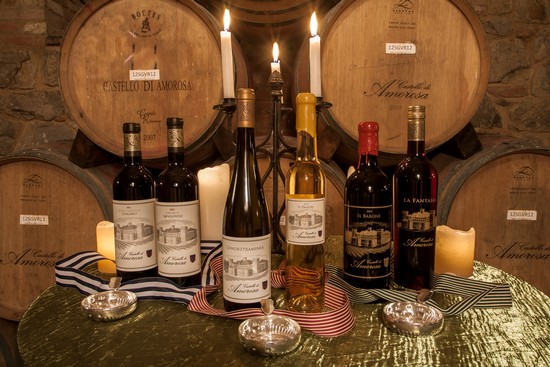
Last month, a panel of 58 judges gathered at the Nikko Hotel in downtown San Francisco to taste their way through a record 4,570 wines from 26 states and 31 countries at the San Francisco International Wine Competition. This was the first year we have entered our wines into this prestigious competition (at which our Director of Winemaking, Brooks Painter, won Winemaker of the Year for our sister winery, V. Sattui last year), and our wines were very well received by the judges. Overall, we received a Best of Class, Double Gold, 4 Gold, 7 Silver, and 3 Bronze medals!
2013 Dry Gewurztraminer - BEST OF CLASS
2010 Il Passito Late Harvest Semillon/ Sauvignon Blanc - DOUBLE GOLD MEDAL
2010 Il Barone Reserve Cabernet Sauvignon - GOLD MEDAL
2010 Napa Valley Sangiovese - GOLD MEDAL
2011 Zingaro - GOLD MEDAL
2013 La Fantasia - GOLD MEDAL
Cheers to our fantastic winemaking team!
Worlds of Wine - Old World vs New World Winemaking
Napa Valley is world famous for its premium-quality wines, placing it alongside other winegrowing regions such as Bordeaux and Burgundy in France, Chianti in Italy, Rioja in Spain, and Barossa Valley in Australia. While these regions may all grow similar varietals of grapes like Cabernet Sauvignon or Chardonnay, the overall style and even legal requirements of winemaking can produce very different results in the bottle. These differences are often referred to as “Old World” vs “New World” styles of making wine. But what do these differences really mean?
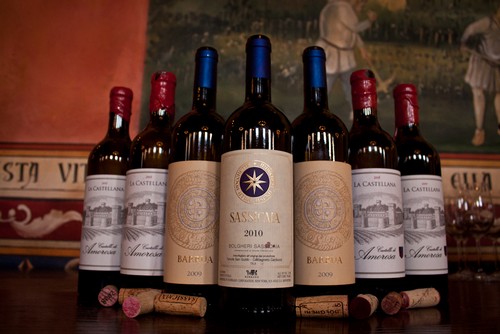
The Castello's La Castellana Super Tuscan alongside the Super Tuscans of Barrua and Sassicaia from Italy
"Old World"
The “Old World” of wine refers to the original winegrowing regions, including Italy, France, Spain, and other nations whose viticultural practices date back hundreds of years. Stylistically, “old world” wines are typically made using traditional methods and techniques, which are often controlled by strict laws that determine what goes in to each wine in order to earn the name on its bottle. For instance, Italian laws in the Chianti region require that every bottle of wine labeled “Chianti” contain at least 80% of the Sangiovese grape.
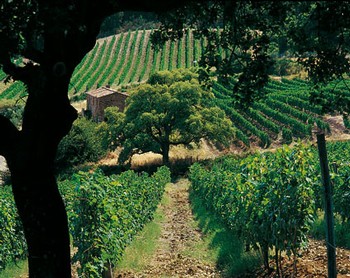
The vineyards of Tenuto San Guido in Bulgheri, Tuscany
You might also notice more “Old World” wines tend to consist of blends, or list only the name of the region in which it was produced rather than a specific varietal. For instance, a “white Burgundy” from France would most likely consist primarily of Chardonnay grapes, or a red “Bordeaux blend” would contain at least two of the five varietals traditionally grown there (Cabernet Sauvignon, Merlot, Cabernet Franc, Petit Verdot, and Malbec). Blending varietals allows winemakers to produce a balanced, often softer style wine, and tends to focus on the “terroir,” or region the grapes were grown, rather than particular types of grapes. This tends to lead to these wines displaying more earthy or mineral characteristics in the glass. “Old World” wines also tend to be lower in alcohol, which allows them to be much easier to pair with food.
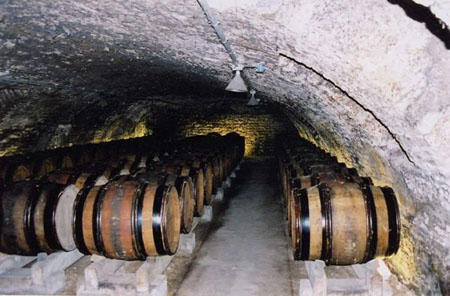
Patriarch Cellars, France
"New World"
Since “Old World” typically means “Europe,” think of the “New World” of wine as basically everywhere else. “New World” regions such as California, Australia, and Argentina have adopted the techniques and varietals of the “Old World” and expanded upon them with new winemaking technologies, often without the strict legal requirements in place in Europe. Wines produced in this style are often described as more “fruit-forward” and oakey, and tend to have a higher alcohol content than Old World wines. Think of your traditional “Big Napa Cab” found so often out here in the Valley, with its rich fruit and bold tannins that make you instantly crave the largest ribeye steak you can find.
The Castello overlooks the northern end of Napa Valley from the foothills of the Diamond Mountain District
Castello di Amorosa: where “Old” meets “New”
Here at the Castello, we focus on “Italian-style” wines, meaning we like to use Italian varietals such as Moscato, Pinot Bianco, Pinot Grigio, Sangiovese, and Barbera. However, because our grapes are grown in Napa Valley and other regions of California, they do have a distinctly “New World” flavor profile, especially for Cabernet Sauvignon, Merlot, Zinfandel and Chardonnay where the local “Terroir” is evident in the glass.
We try to take an “Old World” approach to our winemaking, including traditional winemaking methods such as hand-picking grapes, using gentler press and fermentation techniques such as bladder presses and the “punch down” method for maceration, and aging many of our wines in French Oak barrels in our caves.
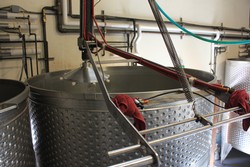
Open top fermentation tanks, to allow the "punch down" of the grape skins & seeds during maceration
Our blends like Il Brigante, and La Castellana “Super Tuscan” have a balanced approach between the varietals, creating a softer, more velvety wine. Keeping our alcohol levels more moderate for our red wines helps to create a more food-friendly style that won’t overwhelm your palate at the lunch or dinner table. We hope to bring a bit of the Old World to the New here in world-famous Napa Valley, and we raise a glass to all of the wonderful wines made here and all over the world that bring new inspiration with every vintage!

Cheers to the best of both worlds!
